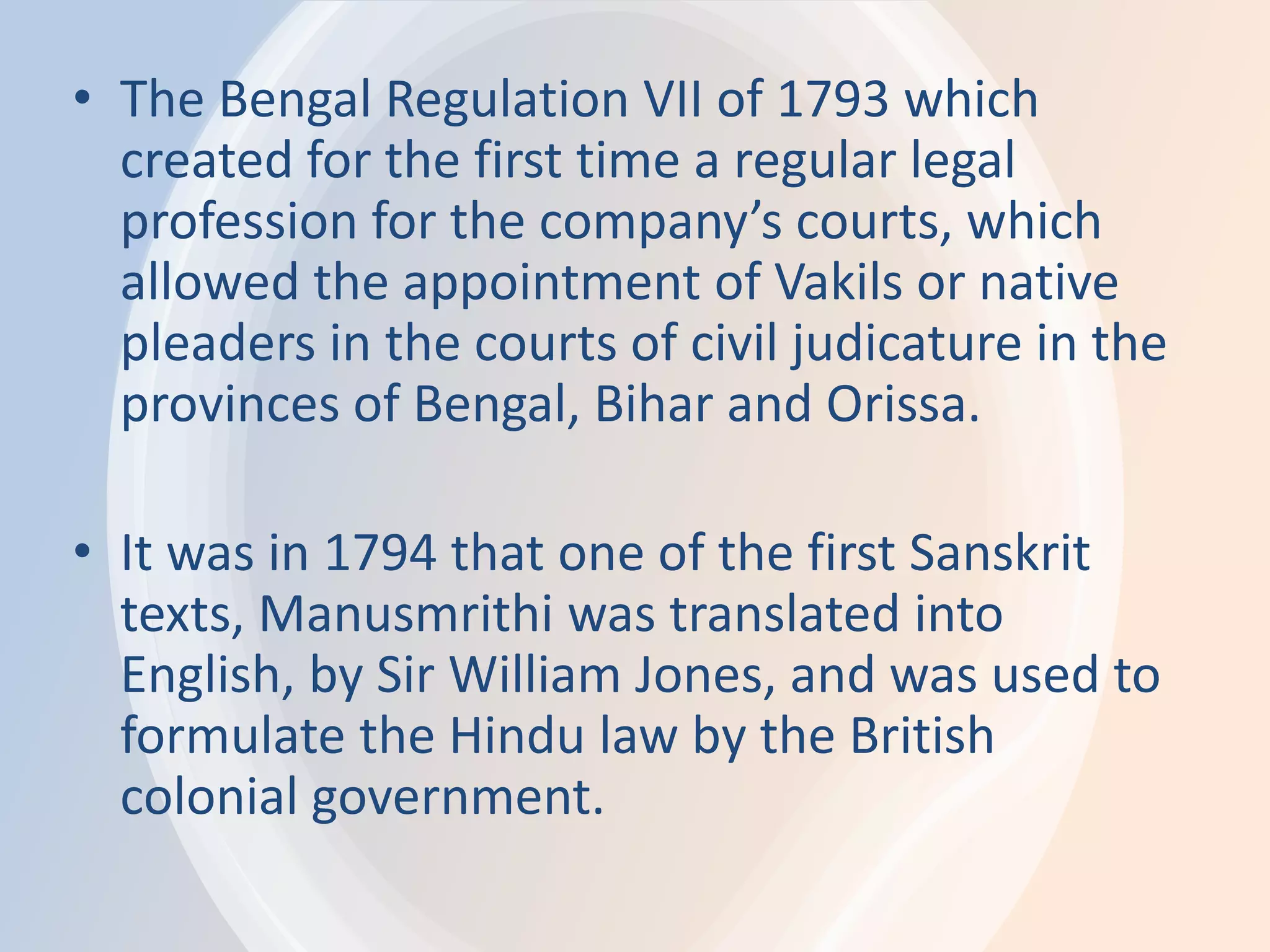The document outlines the evolution of legal education in India across various historical phases, emphasizing its significance in preparing individuals for legal professions and maintaining societal justice. It traces the development from ancient Vedic periods through colonial influences to post-independence reforms, highlighting the changing structure and patterns in legal education. Key reforms and commissions, such as the Radhakrishnan Commission and the All India Bar Committee, illustrate ongoing efforts to enhance the quality and prestige of legal education in India.


























































































































